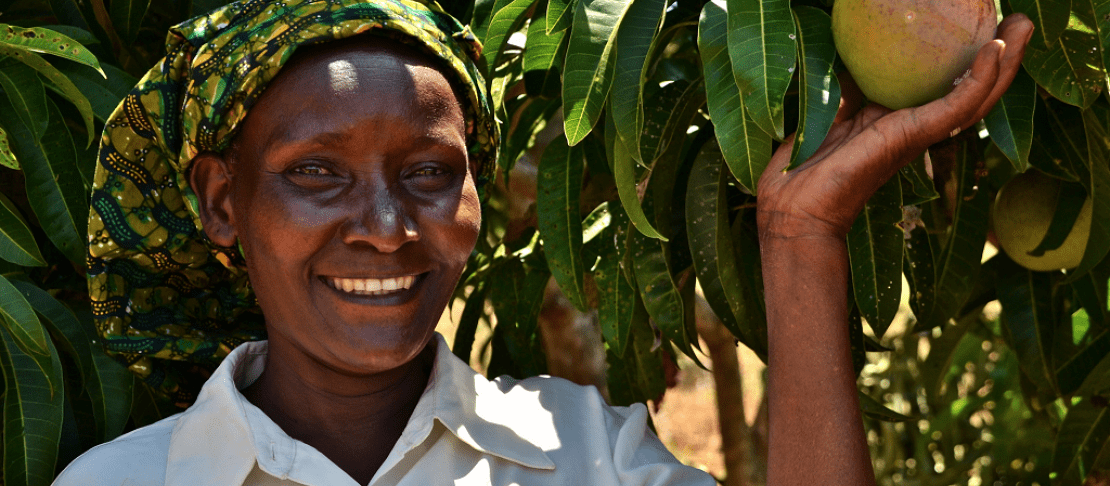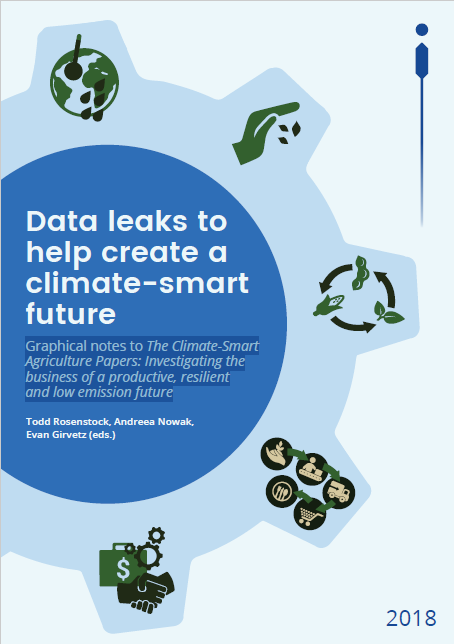The CSA Papers: new book volume explores five dimensions of climate-smart agriculture to help answer decade-old questions

A new open-source book containing previously undocumented scientific evidence that could help practitioners bring CSA to scale is published.
For nearly ten years climate-smart agriculture (CSA) has been promoted as a way to address the twin challenges of climate change and food security—yet many basic questions remain unanswered. With funding from UK Aid through Vuna[1], the World Agroforestry Centre (ICRAF), the CGIAR Research Program on Climate Change, Agriculture and Food Security (CCAFS) and partners mobilized researchers and practitioners from 48 institutions into an ambitious data-leakage endeavor, The CSA Papers. The mission was clear: to release previously undocumented scientific evidence that could help practitioners bring CSA to scale. The result: a 323-page open-source book, with 36 accompanying graphical notes, revealing profound insights and considerations for how to look at agricultural transformation under growing climate risks.
Click here to read the book
As they began work on The CSA Papers, the Vuna team and the editors suspected that invaluable research on CSA had been conducted but remained unpublished and therefore inaccessible to those in the field. To cast a wide net, the editors solicited papers through an open call, encouraging researchers to place their knowledge where it belongs—in the public domain, where it can be of use to development practitioners.
Their hypothesis turned out to be correct: 65 teams of researchers pitched proposals for creative and innovative papers on CSA. After a thorough screening process involving two rounds of peer review by three subject experts, 25 contributions were
selected for publication in the open-source book, officially titled The Climate-Smart Agriculture Papers: Investigating the Business of a Productive, Resilient and Low Emission Future. In parallel, nine additional research groups worked with experts, editors and designers to turn their work-in-progress into visual materials that highlight further insights into CSA. In total, The CSA Papers initiative supported 144 scientists and practitioners in 48 different institutions on four continents as they finalized and released their research, with the intention of encouraging the generation and diffusion of development-ready information.
Contributors to The CSA Papers share their notes and research questions at a side event of the 4th Global Science Conference on Climate-Smart Agriculture, 28-30 November 2017, in Johannesburg, South Africa. The audience of scientists and development partners provided a first peer review of progress and gathered in small groups to discuss the key issues that animate the book and their research. Credit: C. Muller (Vuna)
The contributions in the book and accompanying graphical notes focus primarily on eastern and southern Africa. They are grouped into five sections, each addressing one of the key challenges—as identified by development partners—to the efficient and effective implementation of CSA agendas:
- What are the most significant current and near-term future climate risks undermining smallholder livelihoods?
- How can climate-smart varieties of crops and trees be made available quickly and cost-effectively?
- What are the most promising CSA technologies?
- How can climate risks to value chains be minimized?
- What are the most effective scaling-up mechanisms for generating widespread adoption of CSA?
Download the booklet:
Data leaks to help create a climate-smart future: Graphical notes to The Climate-Smart Agriculture Papers: Investigating the business of a productive, resilient and low emission future
The papers illustrate, among other things, how practitioners can access free online tools to make use of climate data; how new varieties of crops or better soil management can help farmers adapt; how information networks or entrepreneurial training can help the spread of promising technologies; how private-sector firms can promote CSA among their growers; and how farmer-to-farmer training can help bring CSA to scale.
In their chapter in The CSA Papers, Dawson et al. (2019) for instance show why and how perennial ‘new and orphan crops’ should reshape the agenda of researchers and investors who are seeking to promote more resilient food systems. Perennial foods such as the mango, although important to farmers’ nutrition and income, have been neglected by scientists and businesses. Mango trees fruit in the most food-insecure month (April) and ensure good access to vitamins A and C.
However, not all the news is good. There is still tremendous uncertainty regarding how a changing climate will affect individual crops in specific areas. The delivery system for improved germplasm—often praised as the best response to climate change—suffers from lengthy development times and an inefficient system for getting new varieties into the hands of farmers. Even when new varieties and other technologies are available, farmers often are reluctant to adopt them. In addition, precisely how climate change will reshape rainfall patterns across the continent is still largely unknown, and even the models for rising temperatures—the clearest example of climate change, already apparent—lack specificity with regard to the speed and geographical range of the changes. Finally, faulty policies and bureaucratic inefficiencies often stand in the way. In short, CSA uptake and scaling in Africa has been limited by a combination of physical barriers (such as access to adequate farm equipment, tools and materials) and non-physical ones (such as the cultural, institutional and policy environments).
One of the goals of The CSA Papers was to highlight such problems, so that the barriers can be overcome and further progress achieved. In many cases, the answers start not with predicting the future but with addressing the problems farmers are facing right now. Although uncertainties remain, we need to get better at helping farmers respond to weather risks—both today’s and tomorrow’s. Millions of smallholder farmers around the world live on the edge, with their livelihoods and lives threatened by political instability, shifting markets, fickle weather—and now a changing climate that makes the weather even less predictable.
The CSA Papers doesn’t offer definitive solutions for creating a climate-smart future. Instead, it presents a cross-section of efforts to help us move in that direction. While there is a need to do more research in areas of uncertainty and to build the knowledge base, The CSA Papers reveals a great deal of information that we can use to help farmers immediately.
[1] Vuna was a climate-smart agriculture programme funded by UK Aid and implemented by Adam Smith International in five countries in eastern and southern Africa from 2015–2018.
Andreea Cristina Nowak is an Environmental Policy Specialist at the World Agroforestry Centre.




